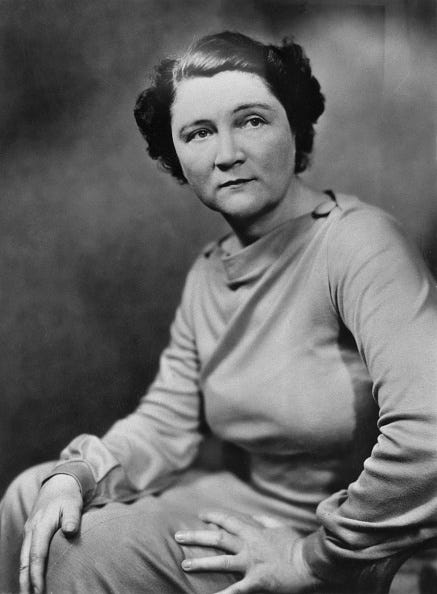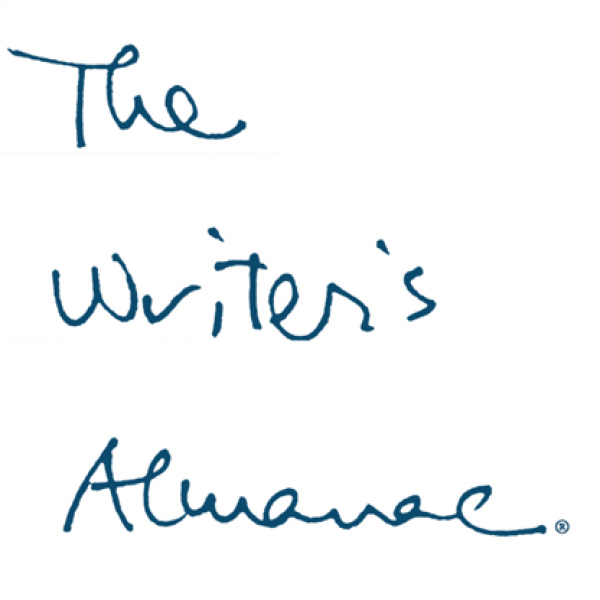The Writer's Almanac from Thursday, August 8, 2013
"Wild Nights, Wild Nights" by Robert Creeley, from If I Were Writing This. © New Directions, 2003.
ORIGINAL TEXT AND AUDIO - 2013
It's the birthday of Pulitzer Prize-winning novelist Marjorie Kinnan Rawlings, born in Washington, D.C., on this day in 1896. She's best known for her book The Yearling (1938), which was the best-selling novel in America in 1938 and won the Pulitzer Prize the following year.
The Yearling is about an adolescent boy in rural Florida who adopts an orphaned baby deer named Flag, becomes really close to the deer, and then, in the end, has to shoot Flag because it's eating all the family's crops.
Marjorie Kinnan Rawlings also loved to cook. She once said, "I get as much satisfaction from preparing a perfect dinner for a few good friends as from turning out a perfect paragraph in my writing." She even published her own cookbook, called Cross Creek Cookery (1942), a few years after she won the Pulitzer Prize for fiction.
And today is the anniversary of the end of one of the last truly happy periods in the life of John Keats. It was on this day in 1818 that Keats finished a long walking tour through Northern England, Ireland, and Scotland. John Keats was 23 years old. He'd planned to become a surgeon, but he realized his real vocation was poetry, and in the spring of 1818, he published his first major long poem, Endymion. And then he set out on a hike through the countryside with his friend Charles Brown. Wordsworth had been inspired by walking around England, so Keats decided to do the same that summer.
Keats was a London boy. He had never seen the mountains. He had never seen a waterfall. He wrote letters back to his brother about the wonderful things that he saw, but gradually on his hike he realized he was no Wordsworth, that he did not want to write about scenery. He was more interested in the people whom he saw along the way. He was fascinated by the peasants who walked barefoot on the roads, carrying their shoes and stockings so they would look nice when they got to town. He once saw an old woman being carried along the road in a kind of a cage like a dog kennel, smoking a pipe.
He came back to London and learned that the reviews of Endymion were coming in, and critics had written ferocious attacks against him. He was crushed. And his brother had come down with a serious case of tuberculosis. His brother died in December, and by the end of that year, John Keats had contracted tuberculosis himself. He would die three years later, in 1821. It was in those last three years of his life that he wrote most of his greatest poems — including the six great odes that he is known for — all written in Keats's amazing year: 1819.
On this date in 1929, the Graf Zeppelin airship took off from Lakehurst, New Jersey, on a round-the-world flight. It was the first such flight by a passenger aircraft. The trip was partially funded by media mogul William Randolph Hearst; he covered half the cost in exchange for exclusive media rights in the United States and Britain. There were 61 passengers and crew on the historic flight: 60 men and one woman. Lady Grace Drummond-Hay, a journalist, covered the flight for Hearst. She was also the first woman to fly around the world. The trip from Lakehurst to Lakehurst took just over 21 days, including stops.
Graf Zeppelin had a remarkable nine-year career. Before its round-the-world trip, it was also the first commercial passenger flight across the Atlantic Ocean. It flew more than a million miles, safely carried 34,000 passengers, flew a scientific mission over the North Pole. But the age of the giant dirigibles came to an end when Graf Zeppelin's sister ship, the Hindenburg, went up in flames in 1937.
Be well, do good work, and keep in touch.®
To see a collection of items for sale related to The Writer’s Almanac, click this link to our online store!





